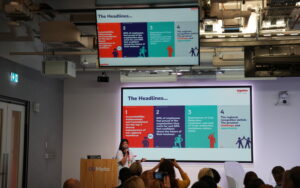Email after email. Running from meeting to meeting, while running on fumes. Frazzled. Every task demands immediate attention and there’s no time to breathe.
Welcome to the urgency culture.
Lucy d’Abo, CEO of together, says “When everything is a priority, it means nothing is a priority! We are more connected and available than ever before. In the last 20 years, we have shifted from work boundaries that start and end at the office to mobile phone e-mail access, laptops that can be transported home, Apple watch notifications, work WhatsApp groups, and most recently an increasing blur between home and work physical spaces accelerated by the pandemic.
With this has come great benefit such as the rise in the flexibility of work, particularly in relation to time and location. However, at the same time, research has shown chronic stress and burnout are closely tied to a heightened sense of alertness. Desperate pressure to constantly be doing more harms productivity and motivation.
The damage to a workplace culture due to constant urgency is well documented. 99% – that was the UAE’s burnout rate captured in the recent Cigna Healthcare Vitality Study. In Saudi Arabia it was similarly high – 95% of respondents said they had experienced symptoms of burnout – globally that was 94%. High stress rates lead to high employee turnover, and lower quality of work, which both significantly impact on the bottom line.
Urgency is not bad, however in the long-run unnecessary urgency drains energy from the work that real matters. The answer, pivot from urgency to prioritisation.”




